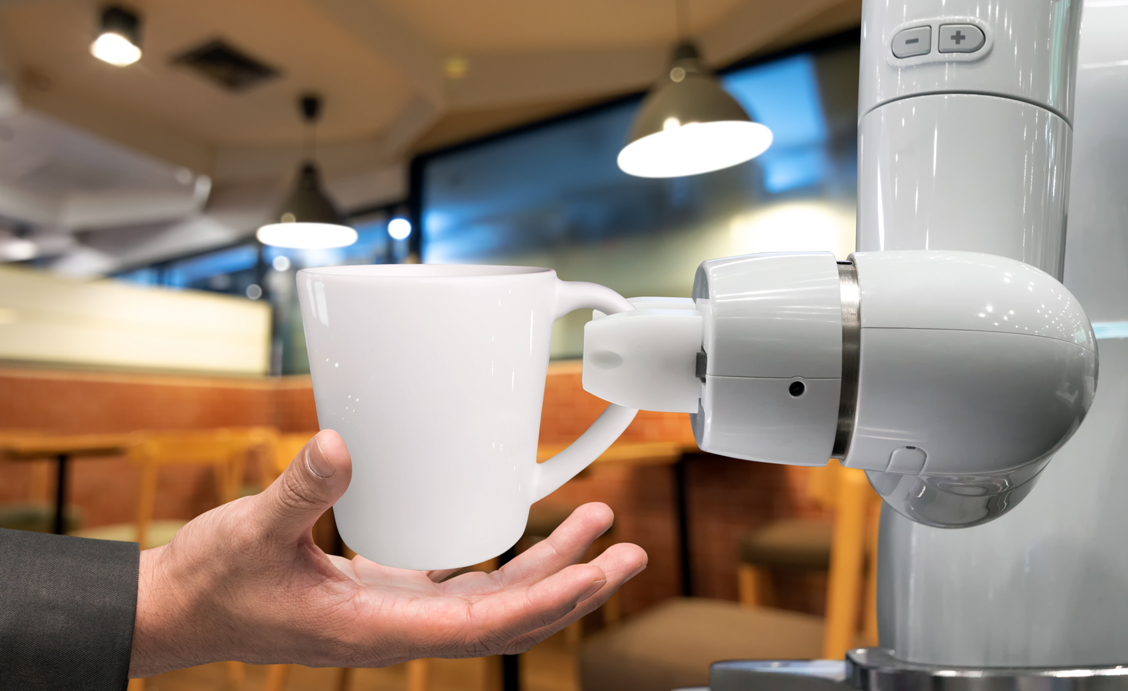COVID-19 Fuels Demand for Touchless Technology

From touchpoints to touchless: the COVID-19 pandemic has accelerated the demand for, and innovations in, touchless technology. Investing in touchless technology to protect both their employees and customers may likely determine the success—or struggle—of a company during this global health crisis.
In the comfort of their homes, make-up mavens search for the perfect lipstick shade through a virtual try-on program on their personal devices. In Japan, facial recognition technology meets artificial intelligence to make the removal of facemasks and sunglasses unnecessary.
In South Africa, 75% of consumers are now making contactless payments. In the suburb of Burwood in New South Wales, Australia, residents hover their hand over a sensor to activate the pedestrian crossing light.
“Where I see a lot of movement now is in the sensor side of the business,” Arthur Tan, CEO of IMI, shared during an interview with EMSNow earlier this month. “So, a lot of automation [and] sensors. You know, nobody wants to touch a door anymore.”
And rightfully so—the fewer times we touch possibly contaminated surfaces, the less our chances of catching a disease that has infected more than nine million people around the world. As COVID-19 changes the way we live, move, and work, it has also accelerated the need for and innovations in touchless technology.
Technology to put people at ease
In varying degrees, touching surfaces in populated areas and public spaces makes people anxious—and it’s a feeling that’s not likely to go away anytime soon. The COVID-19 pandemic "is one of those rare events that could have wide-ranging, long-term impacts," Chris Schreiner, director of user experience innovation at Strategy Analytics, told Investor's Business Daily.
Concerns about the health and safety of both customers and employees should be top of mind for any business. “The retailers with the highest degree of touchless automation, both in stores and in warehouses, may enjoy a clear competitive advantage, as they face lower risk to consumers, employees, and their overall operations,” says McKinsey.
Touchless technology allows frictionless access and supports social distancing guidelines—two key features that have it gaining momentum during this global health crisis.
Let’s take a look at some applications of touchless technology that will help keep people safer.
Infrared (IR) sensors
Japan accounts for around half of the global market share in the sensors market, and local companies are testing and rolling out new touchless technology. Last April, elevator manufacturer Fujitec launched what they call “elevators of enhanced public hygiene”. The model includes an optional add-on contactless panel feature that uses IR sensors to detect a user’s destination floor when they hover their hands over the dashboard.
According to the Straits Times, the new model also comes with a congestion indicator that shows how crowded an elevator is, which Fujitec said “will help users give consideration to social distancing”. Originally designed for hospitals, food companies, and pharmaceutical manufacturers, Fujitec has reportedly been getting numerous inquiries from general office buildings.
Voice control
Since voice-activated systems were first introduced in 2011, its use has evolved from information searches to performing errands and completing tasks. For example, voice order technology by U.S. retail company Walmart lets shoppers add items to their online grocery cards. “One clear strength of voice interactivity is that it does not require a steep learning curve,” Andrew Lazarow, Senior Designer and A/V Technology at ESI Design, told Design News. “For many languages and dialects, development and API’s [application programming interface] for voice are constantly becoming more reliable and conversational.”
UK-based Juniper Research, which “specializes in identifying and appraising new high-growth market sectors within the digital ecosystem,” estimates use of voice assistants at 4.2 billion devices this year, growing to 8.4 billion by 2024, with much of the interactions on smartphones. Until this COVID-19 crisis comes to pass, many of us will be more comfortable talking to our phones than touching them.
Contactless communication technology
At least 55 times a year—that’s how often banknotes change hands, bringing a host of viruses and bacteria with it. While the World Health Organization (WHO) estimates that the COVID-19 virus will not last longer than two hours on banknotes, a lot of us would rather not take that risk.
Enter contactless payments, often made possible through radio-frequency identification (RFID) or near-field communication (NFC). Accenture listed “a strong push towards a cashless society” as the top long-term impact of the pandemic on global payments. In an April 2020 survey by Mastercard of 17,000 consumers in 19 different countries, 82% see contactless payments as “the cleaner way to pay.” Mastercard also reports that worldwide, contactless transactions grew twice as fast as non-contactless transactions in the grocery and drugstore categories between February and March 2020.
Robots
From disinfecting spaces to moving goods and materials between workspaces, robots can increase workspace safety. In industries such as manufacturing, pharmaceutics, and food processing, collaborative robots (cobots) work alongside human workers, replicating repetitive tasks with precision.
Cobots not only increase productivity but also allow companies to follow social distancing guidelines without major renovations in facilities. According to Dublin-based Research and Markets, the global collaborative robot market is expected to grow from USD 981 million in 2020 to USD 7,972 million by 2026.
A growing market
MarketsandMarkets, which provides quantified B2B research on high-growth emerging opportunities or threats impacting company revenues, reports that the touchless sensing market is projected to reach USD 15.3 in 2025 from USD 6.8 billion in 2020 at a CAGR of 17.4%. According to the report, major drivers for the market include “increasing demand for contact-free sensing as well as hygiene issues and favorable programs deployed by the government.”
The COVID-19 pandemic may be upending our world, but through innovations in technology, it is also allowing us to reshape it into a safer, more resilient world.
Other Blog


